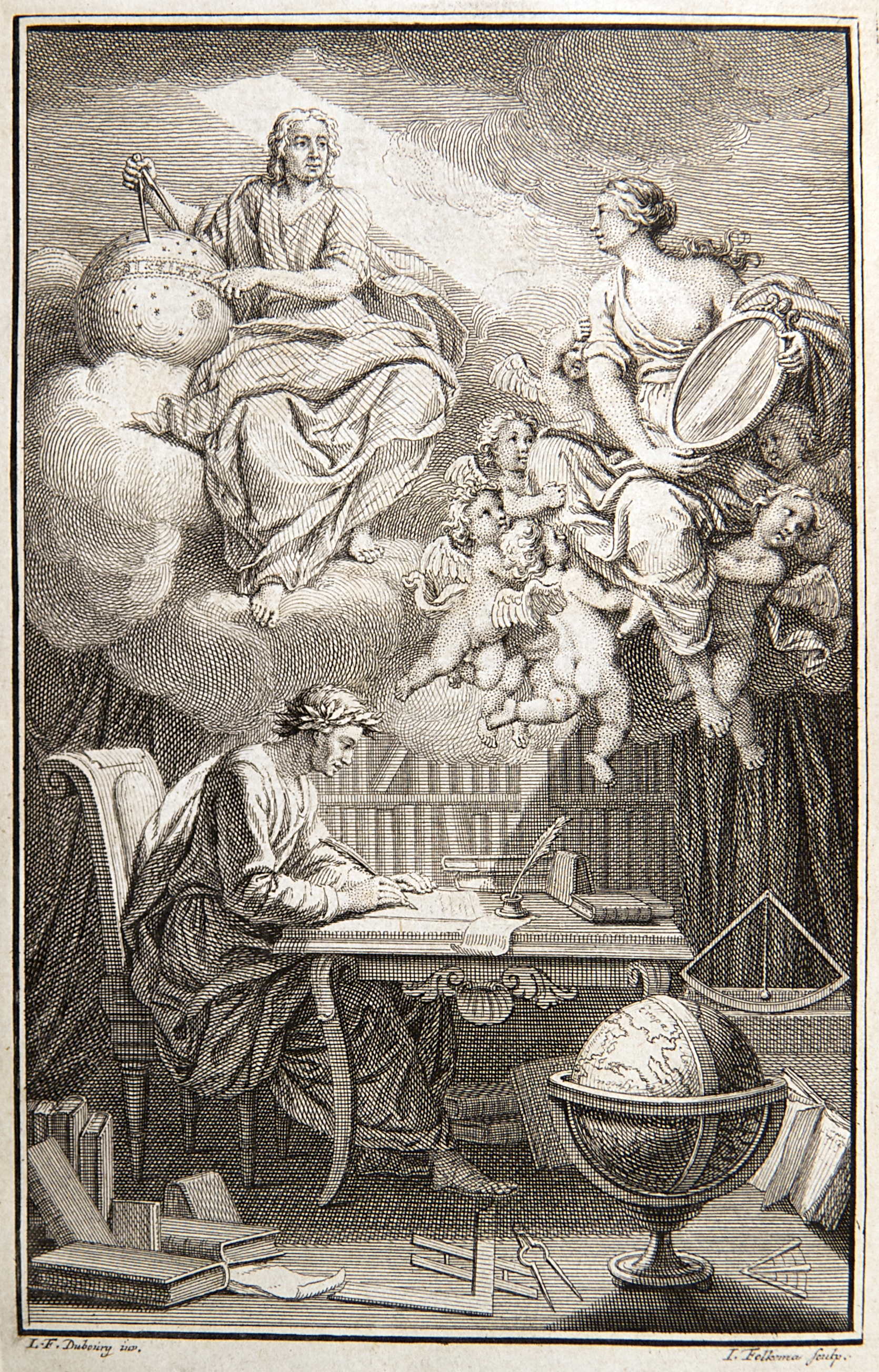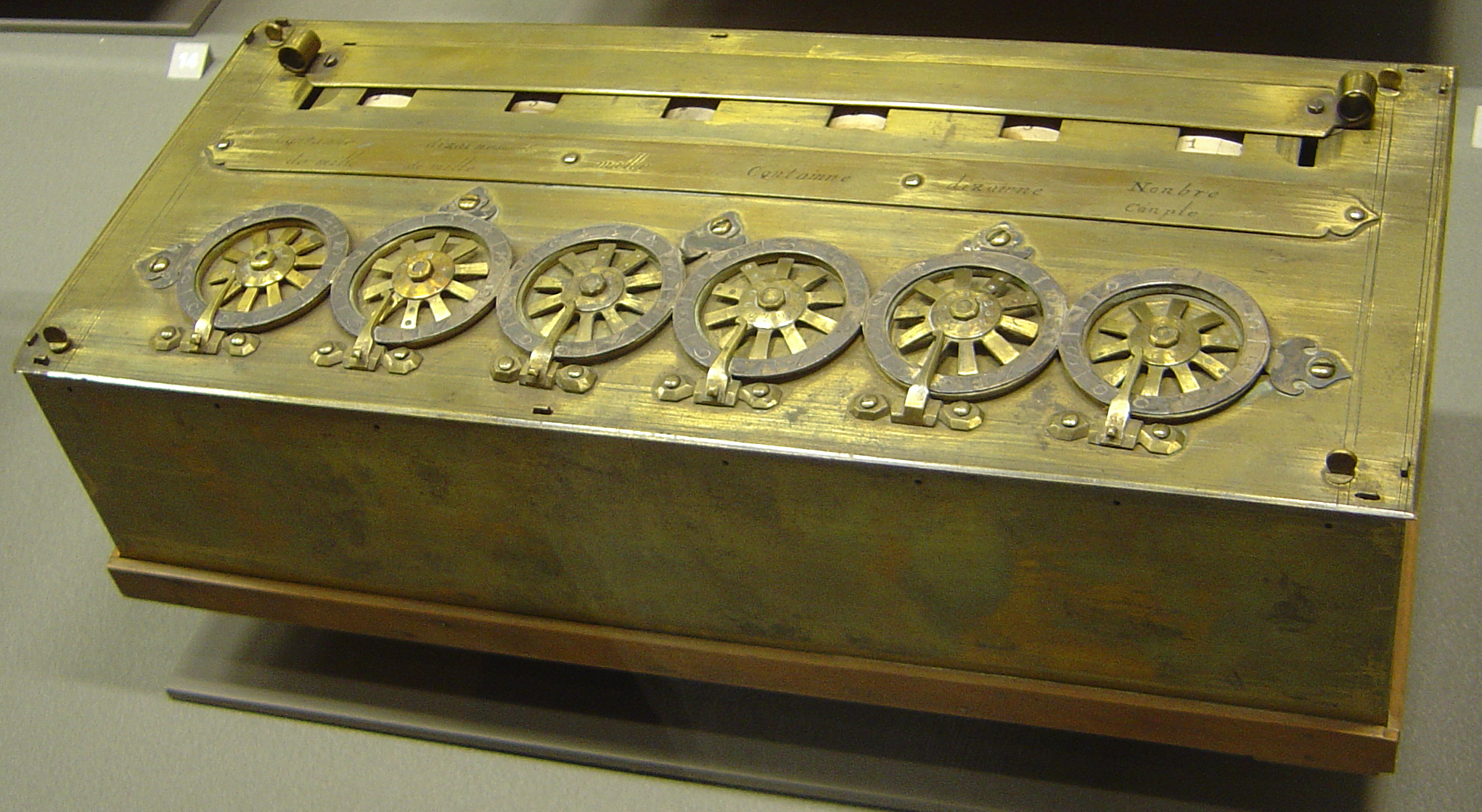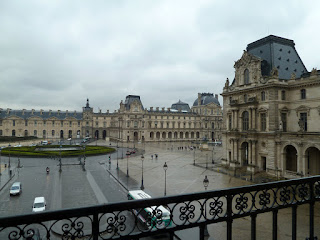 |
| David Eugene Smith (from columbia.edu) |
 |
| Jean le Rond d'Alambert (from Wikipedia) |
I first learned about d'Alambert as a freshman in university when we studied limits and used d'Alambert's ratio test. A little snapshot about him prompted me to find more and I looked for his biography (no Internet those days! :-) ). I became fascinated by his many talents and interests (not so much with his personality). Geometry stayed d'Alambert's favorite subject as he wrote in 1777 letter to Lagrange:
What annoys me the most is the fact that geometry, which is the only occupation that truly interests me, is the one thing that I cannot do. All that I do in literature, although very well received in our public sessions of the French Academy, is for me only a way to fill the time for lack of anything better to do.
While connected with French Academy of Sciences on the Left Bank, d'Alambert was a frequent guest at M-me Geoffrin's salon at No.374 Rue Saint Honore. Later he moved in the house of another well known hostess of her own salon Julie de Lespinasse. I will return to places on Rue Saint Honore later.
 |
| (from Wikipedia) |
 |
| Mausoleum to Monge in Pere Lachese cemetery |
Some places of historical-mathematical interest on the Right Bank:
On Rue de Rivoli you cannot miss 52 m tall tower - Tour Saint Jacques , all that remains there from former 16th century church. Blaise Pascal replicated Torichelli's experiment with barometer there - carried it up to the top of the tower and checked that mercury level has dropped. Pascal's statue now is at the base of the tower.
In 1979 I saw Pascal's calculator in Zwinger Museum in Dresden, this time I missed the opportunity to see the other copy signed by Pascal in Musee des Arts et Metiers. This museum is on my list to visit next time I am in Paris.
The Palais du Louvre is known first and foremost as a museum which houses one of the most stunning collections of artworks in the world. Yet for almost seven hundred years the buildings constituted one of the principal residences of the kings and emperors of France. It became museum in 1793 and at that time the art collection was not large enough to fill all complex, so part of it was used for government offices and even residencies. For example, mathematician Legendre was asking for quarters for himself in the older part of the Louvre.
On a rainy day it was great to visit Louvre and to walk through it not rushing. We could look at the details and notice mathematical constructions in architecture or in famous artworks.
This time though we did not try to check all the possible uses of golden ratio in Venus de Milo or Mona Lisa like we tried in Milan couple years ago when finally got a chance to see The Last Supper and then alerted security guards performing suspicious activities by their standards. I was trying to follow straight lines with my fingers in front of my eyes to check whether they really intersect in a point just above the head of Jesus, David used his notebook to locate the vanishing point more precisely. Security guards surrounded us and demanded to inspect our hands. After they found nothing, they stared at us very puzzled. Then I politely said that we are mathematicians, which they took as some particular medical diagnosis.
I wish I would've come to Paris with my children when they were very young to show how much math is there around. This thought came in mind again today when I read David Bornstein's A Better Way to teach Math - "...very early in school many kids get the idea that they’re not in the smart group, especially in math. We kind of force a choice on them: to decide that either they’re dumb or math is dumb." Imagine walking in Paris with a little curious mind and big eyes next to you. In front of Louvre there will be a question - what is this big glass thing? Imagine all the different stories you can tell about pyramids - mathematical or not. How about asking question whether these are also pyramids on the wall of this new building? Or - what is a diagonal? That answer I would know how to answer but I would not be able to answer next logical question - why the supermarket is called Diagonal? In middle school geometry class students have hard time learning all those various geometric terms. Don't you think it would be great idea to call various offices in school in those names? It always helps to remember when you have associations connected to the term.
How about asking question whether these are also pyramids on the wall of this new building? Or - what is a diagonal? That answer I would know how to answer but I would not be able to answer next logical question - why the supermarket is called Diagonal? In middle school geometry class students have hard time learning all those various geometric terms. Don't you think it would be great idea to call various offices in school in those names? It always helps to remember when you have associations connected to the term.I can imagine some more questions -why this is Point Zero? What is zero? What it means omega? What is the symbol next to that word?
Indeed, I am getting carried away from what I started to write about. To speed thin gs up in my description I will just now quote David Eugene Smith about places connected with Voltaire and marquise du Châtelet
 |
| In the frontispiece to their translation of Newton, du Châtelet is depicted as the muse of Voltaire, reflecting Newton's heavenly insights down to Voltaire. |
From David Eugene Smith's Historical-mathematical Paris:
If we rank Voltaire in our guild because of his work on the philosophy of Newton, we shall naturally find many spots in Paris connected with his name, and portraits and statues in great number and often of much excellence. The present Rue Moliere, running from the Avenue de l'Opera to the Rue Richelieu, for example, was once the Rue Traversiere, and at the old number 25 was a house which was rented to the Marquise du Chatelet,4 and there Voltaire lived for some time, setting up a little theatre for his plays. Around the corner, at No. 8 of the Rue de Richelieu, the street on which the Bibliotheque Nationale fronts, was the cafe of Charlotte Bourette, who was known as the Muse Limonadiere, and whom Voltaire esteemed for her wit.
Farther up the Rue de Richelieu, at No. 102, stood a house which Voltaire owned and in which his niece, Mme. Denis, lived after the death of the Marquise du Chatelet. Next door, at No. 100, stood the house of Voltaire's friend, Mme. de St. Julien, whom he often visited.
 |
| Rue Richelieu No.102 |
Voltaire also lived (1732 and 1733) at what is now,No. 20, Rue de Valois, in the same vicinity, east' of the Palais Royal. Not far from here, at No. 161, Rue Saint-Honore, is the Cafe de la Regence, which I well recall as still prominent in the artistic life of Paris when I was a boy. (note: DS wrote this in 1923!)
 |
| no cafe there anymore |
Its predecessor stood a little to the east, at the Place du Palais Royal, and was frequented by Voltaire as well as by Benjamin Franklin, Diderot, Napoleon, and other makers of history. Over on the Ile Saint-Louis, at No. 2, on the Rue Saint-Louis-en-l'Ile, is the hotel (man- sion) of Nicolas Lambert de Thorigny, sometime president of the Cour des Comptes, built in 1680. The Marquise du Chatelet lived there for a time, and Voltaire was, as usual, a guest of the house. His sister, Mme. Mignot, mother of Mme. Denis (to whom Voltaire was greatly attached), lived at No. 133, Rue Saint-Antoine, a continuation of the Rue de Rivoli and leading into the Place de la Bastille.
Hotel de Sully on Rue Saint-Antoine
 |
| The Place de la Bastille |
Although the Bastille has long since ceased to exist, when the wanderer stands upon its ancient site he may reflect that Voltaire was twice imprisoned there, for his rash utterances on the rights of man. Voltaire was baptized (1694) in the church of Saint-Andre-des-Arcs, which was built in 1210. 2 and her family, Tonnelier de Breteuil, there are various interesting spots connected with each. The family owned a hotel at No. 14, Rue Portefoin, a little to the southeast of the Conservatoire des Arts et Metiers. They also owned (1760) a place at No. 56, Rue des Francs-Bourgeois, near the Palais des Archives Nationales, and somewhat earlier (1728) one at No. 4, Place des Vosges, on the same street. In 1752 the marquise was living at No. 18 of the same Place.
 |
| Place de Vosges |
It stood on the present Place Saint-Andre-des-Arts,1 near the Point Saint- Michel, and was demolished about 1800. In 1793 it became the Temple de la Revolution. Voltaire once worked as a clerk in the office of Maitre Alain, No. 1, Rue des Grands-Degres, so called from the steps leading down to the quai, and he became a mason in the lodge of the Ne uf Soeurs which stood at No. 80 of the Rue Bonaparte; but the atmosphere of the Quartier Latin was perhaps not so well suited to his maturer years, although he lived for a time in Rue Mazarine and in 1743 was living at No. 23, Rue Fontaine Moliere. He died in the house of the Marquise de Villette, at No. 27, Quai Voltaire, as an inscription states. The present name of the quai, formerly the Quai des Theatins, was given in memory of this event, as was that of the Rue Voltaire which branches off at No. 211. His final resting-place is appropriately in the Pantheon, the Valhalla of France. As to busts, bas-reliefs, and statues of Voltaire, Paris has been over-generous. Houdon's bust in the Comedie Franqaise is the best known, but the statue by Caille (1885) on the Quai Malaquais is also familiar to every visitor to the book- stalls on the Rive Gauche. "
 |
| the Comédie-Française |
 |
| Place Franz Liszt in Paris(from wikipedia) |
David Smith mentioned that near Gare Saint Lazare Franz Liszt lived at No. 63 Rue de Provence. The great composer and pianist was supporting the young arithmetic prodigy Henri Mondeux. On April 30, 1841 Liszt gave au benefice de jeune Patre Mathematicien. May be this fact should be more popularized in order to encourage present day music stars to give benefit concerts to support mathematicians, particularly when government is cutting NSF funds.
Maupertuis is buried in Eglise Saint Roch on rue Saint Honore and Lagrange lived at No. 124 rue Saint Honore. I went to explore Rue Saint Honore but nowadays it has become fanciest shopping address in the world may be, so from mathematical world I felt thrown in another type of the world but about it - next time.















No comments:
Post a Comment